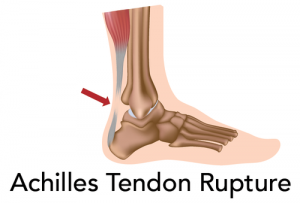The Achilles tendon, the largest tendon in the human body, plays a crucial role in walking, running, and jumping. However, a rupture in this tendon can be a debilitating injury, affecting mobility and causing significant pain.
Fortunately, with prompt and appropriate treatment, individuals can recover from an Achilles Tendon Rupture Treatment and regain strength and function in the affected leg.
In this article, we’ll explore the causes, symptoms, and treatment options for Achilles tendon ruptures, as well as the importance of seeking timely medical care to facilitate a successful recovery.
Understanding Achilles Tendon Ruptures: Causes and Symptoms
Achilles tendon ruptures typically occur as a result of sudden, forceful movements or excessive strain on the tendon. Common causes include sudden acceleration, jumping, or pivoting motions, as well as overuse or repetitive stress on the tendon over time. Individuals who participate in activities that involve running, jumping, or sudden changes in direction are at a higher risk of experiencing an Achilles tendon rupture.
The most common symptom of an Achilles tendon rupture is a sudden, sharp pain in the back of the ankle or calf, often described as a “popping” or “snapping” sensation. Other symptoms may include swelling, bruising, difficulty walking or bearing weight on the affected leg, and a noticeable gap or indentation in the back of the ankle where the tendon has torn.
Seeking Medical Evaluation: Diagnosis and Treatment Options
If you suspect that you’ve experienced an Achilles tendon rupture, it’s essential to seek prompt medical evaluation to confirm the diagnosis and begin treatment. Your healthcare provider will perform a physical examination, assess your symptoms, and may order imaging tests such as an ultrasound or MRI to confirm the extent of the injury.
Treatment options for Achilles tendon ruptures vary depending on the severity of the injury, your overall health, and your activity level. In some cases, non-surgical treatments such as immobilization in a cast or walking boot, along with physical therapy, may be sufficient to allow the tendon to heal properly. However, for more severe ruptures or in cases where non-surgical treatments are ineffective, surgical repair of the tendon may be recommended.
Surgical Intervention: Repairing the Ruptured Tendon
Surgical repair of an Achilles tendon rupture typically involves making a small incision in the back of the ankle and suturing the torn ends of the tendon back together. In some cases, additional procedures such as tendon transfer or augmentation may be necessary to strengthen the repair and promote healing.
Following surgery, patients will undergo a period of immobilization and rehabilitation to gradually restore strength, flexibility, and range of motion in the affected leg.
Rehabilitation and Recovery: Restoring Function and Mobility
Rehabilitation plays a crucial role in the recovery process for Achilles tendon ruptures, regardless of whether surgery is performed. Physical therapy exercises, stretching, and strengthening techniques are essential for rebuilding strength and flexibility in the calf and ankle muscles, as well as improving balance and coordination.
Your physical therapist will work with you to develop a personalized rehabilitation plan based on your specific needs and goals, guiding you through each step of the recovery process.
Preventing Future Injuries: Tips for Achilles Tendon Health
While Achilles tendon ruptures can be challenging to prevent entirely, there are steps you can take to reduce your risk of injury and maintain tendon health. This includes incorporating proper warm-up and stretching exercises into your workout routine, gradually increasing the intensity and duration of physical activity, wearing supportive footwear, and avoiding sudden changes in activity level or excessive strain on the tendon.
Conclusion: Restoring Mobility and Strength
In conclusion, Achilles tendon ruptures are painful and potentially debilitating injuries that require prompt medical attention and appropriate treatment to facilitate a successful recovery.
Whether treated conservatively or surgically, rehabilitation plays a crucial role in restoring mobility, strength, and function in the affected leg.
By seeking timely medical evaluation and following a comprehensive rehabilitation program, individuals can overcome an Achilles tendon rupture and return to their normal activities with confidence and resilience.
